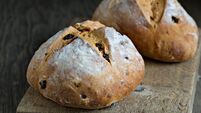Joe McNamee: Why we should savour the flavour of a fine Irish cider this autumn

Cork's Stonewell Cider
I wrote a few weeks ago of autumn and its harvest bounty, including a brief mention of apples.
To be honest, the entire column could have been devoted to apples in autumn, possibly the quintessential symbol of a bountiful harvest, a fruit that keeps on giving right the way through the deepest, darkest depths of winter and well on into the following spring, if properly stored.






